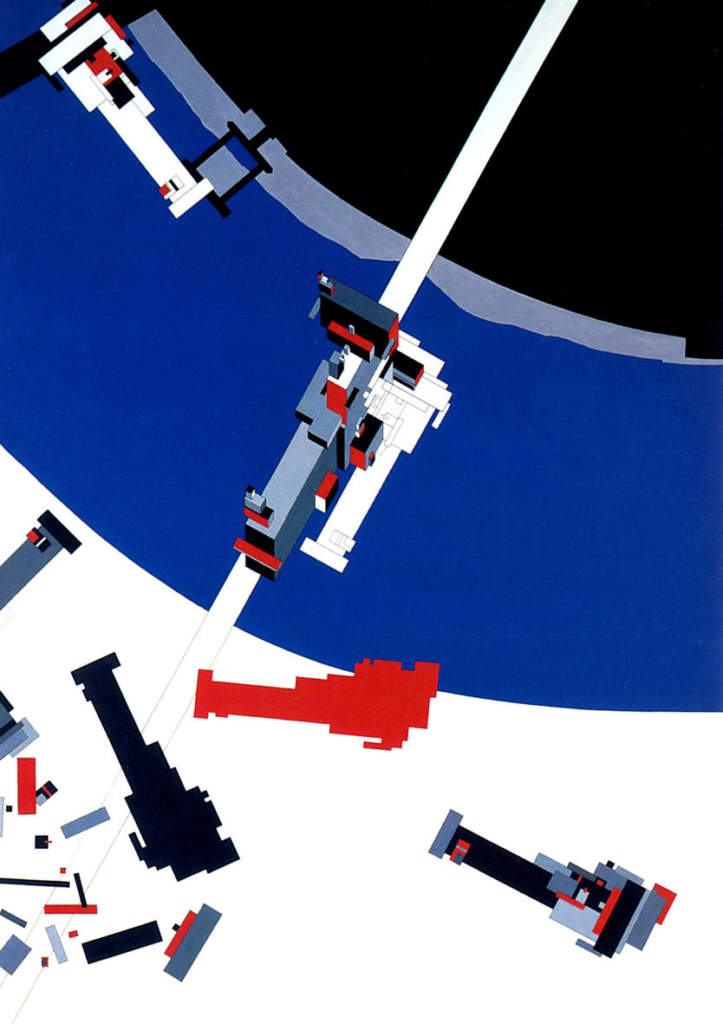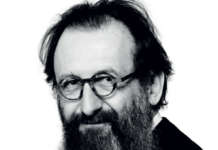Palazzo Franchetti in Venice will be the special venue for an exhibition dedicated to Zaha Hadid. In celebration of Zaha Hadid’s career in architecture and design that spans four decades, Fondazione Berengo will host an abridged retrospective exhibition of her work at the 16th century Palazzo Franchetti on the Grand Canal, Venice, Italy.
The exhibition, coinciding with this year’s Venice Architectural Biennale, showcases many of the seminal paintings, drawings and models of Hadid’s repertoire, conveying the ingenuity and dynamism of her architectural projects in a variety of media including photography and film.
Through Hadid’s designs – built, under-construction, in development and unrealised – the exhibition displays the pioneering research and investigation that instigates and defines Zaha Hadid Architects’ work.
Hadid directly engaged with the experimentation of the Russian Avant-garde early in her career, exploring the compositional techniques of fragmentation, layering and porosity that transcend all her projects. Her early works displayed include Malevich’s Tektonic (1976-77), Hadid’s fourth-year project at the Architectural Association School in London that bridged the River Thames. Also showcased are the competition winning Peak Club, Hong Kong (1982-83, unrealised); Hafenstrasse, Hamburg (1989, unrealised); Grand Buildings, Trafalgar Square, London (1985, unrealised); Victoria City master-plan for Berlin (1988, unrealised) and the Cardiff Bay Opera House (1994-95, unrealised).

Hadid described her process, “My paintings really evolved thirty years ago because I thought the architectural drawings required a much greater degree of distortion and fragmentation to assist our research – but eventually it affected the work of course. In the early days of our office the method we used to construct a drawing or painting or model led to new, exciting discoveries. We sometimes did not know what the research would lead to – but we knew there would be something, and that all the experiments had to lead to perfecting the project. It might take ten years for a 2D sketch to evolve into a workable space, and then into a realised building. And these are the journeys that I think are very exciting, as they are not predictable. For example, I used to produce hatched lines on my drawings. These became striated models, which eventually became the diagram for MAXXI Museum. So a simple idea like that would take quite a long journey."
The leads and connections between all of Zaha Hadid Architects’ projects is evident in the exhibition’s juxtaposition of these early designs with projects such as the BMW Central Building in Leipzig (completed 2005) within a landscape of models that integrates project typologies, formal composition, geography and chronology.
Three projects representing milestones in Zaha Hadid’s career will also be presented in their own room. Beginning with the Vitra Fire Station (completed 1993) in Weil am Rhein, Germany, Zaha Hadid Architects’ first completed project and followed by the Rosenthal Center for Contemporary Art in Cincinnati (completed 2003), which contributed to Zaha Hadid being awarded the Pritzker Architecture Prize in 2004. Concluding the room’s projects is the MAXXI Museum of 21st Century Arts in Rome (completed 2009) which transcends the periods in which the practice implemented and developed its wide-ranging experimentation with the rapid advancements in computer-aided design.
Helene Binet’s photographs, capturing the integrity and materiality of Hadid’s projects, will also be showcased in their own room.
All of Zaha Hadid Architects works in progress will be exhibited, including projects to be completed in the coming year.
Informazioni:
Zaha Hadid at Palazzo Franchetti
Campo Santo Stefano, Venice
27 May – 27 November 2016









